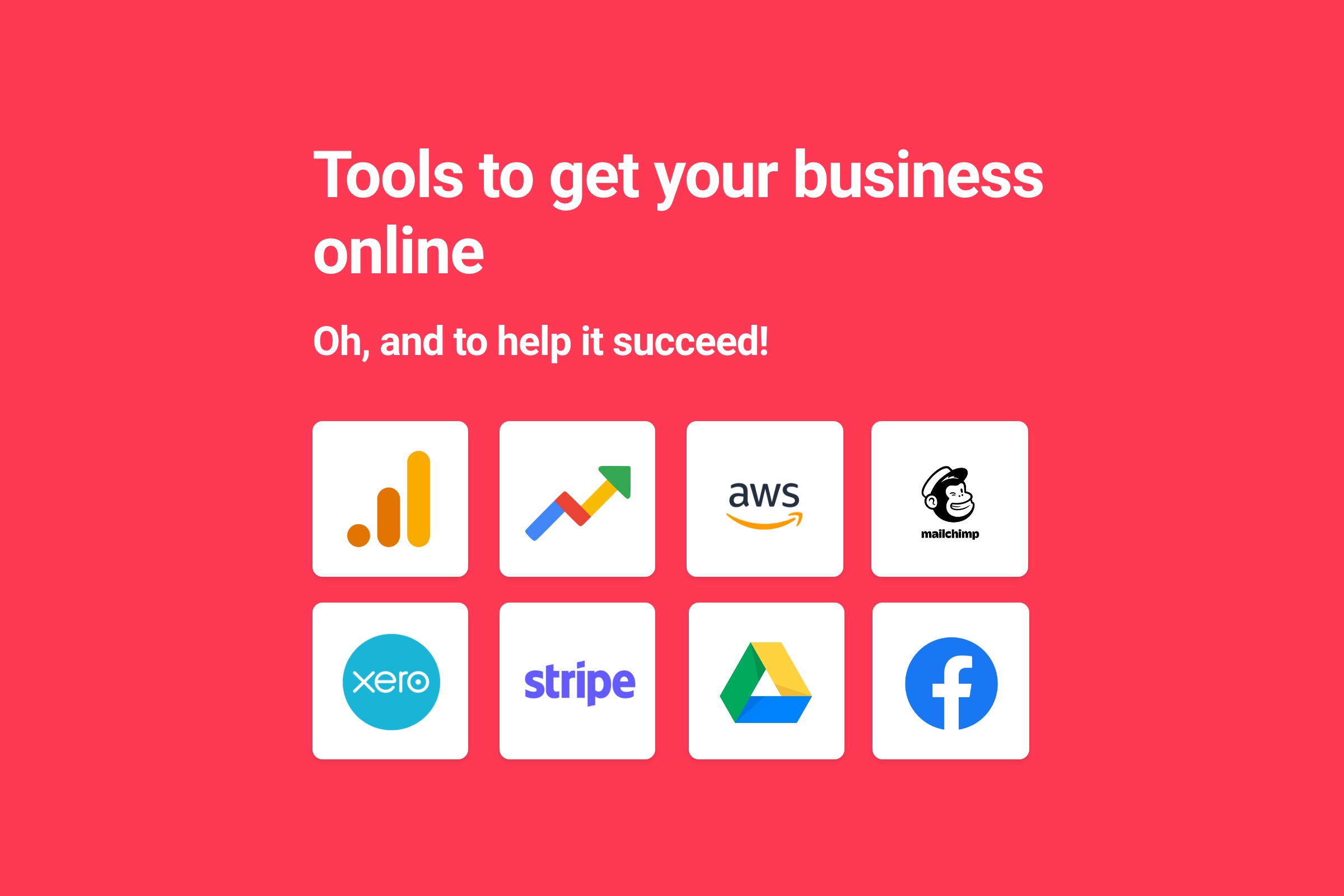Table of contents:
Taking that first step to digitise your business can be a hard one. You have to navigate through millions of websites offering you a product that will (probably not) increase revenue, efficiency or some metric related to size.. Don’t do it, it’s a trap! It’s tough avoiding those cheap parlor offers when taking your first steps online, especially if you don’t know what’s out there in the community. Regardless of these ‘snake oil’ sales websites – we believe the benefits
So to do our part, we at Builtflat have compiled a list of online tools or methods to help you simplify and take full advantage of your digital journey. These tools range from free to paid options and are perfect for any type of website from e-commerce to entertainment, no matter the category or industry.
Let’s start with the free tools!
Social Media.

Connect better with your customers.
Thousands of people around the world have started and successfully run their business solely on social media, thousands more use it to supplement their business structure and growth.
Social media is an interesting one that a lot of businesses neglect, usually saying it’s not worth the time or that their audience isn’t targetable. You only have to look at the growth of social media channels over the past decade to know that there is nowhere else in the world where you can reach so many people in one space. And targetability.. Think about websites like Facebook and the details they gather from you when you sign up, plus all the page Likes and Follows, the groups you’re in, the location data, your friends and even their interests. All that can be used at your disposal.
Starting off you’ll need to get an idea of your ideal target customer and keep that image of the person in your mind, or better yet – write it down. Then it’s time to pick your platforms and there’s a few to choose from. Use your identified target customer for reference when picking and have a look through the stats of each. For instance, Instagram is very popular with those ages 18 to 24 whereas Facebook with 2 billion monthly active users is more popular with those aged between 25 to 34.
Once you’ve picked out the appropriate channels you’ll need to start planning your approach. Think about how you can connect to your target audience through your profile and build around that. Are they after professionalism? Would a good laugh help convert them? Would making the brand seem more humane create a great connection with your customer base? Build that into your profile and your approach to your customers on these channels.
Next, think about the content you would create and how often it could be created. I always think of Social Media as a content beast, constantly hungry for content. This doesn’t mean you need to overfeed the beast – It means you need to be active and keep him on the appropriate diet. Tie this in with Social Media analytics and you’ll be able to spot the perfect recipe to feed him with down to the type, time, quantity, and more. Protip: Having a content calendar helps!
A big benefit for businesses on social media is the advertising capabilities. The targetability is insane! Not only that, it’ll give you a rough idea of your ROI and estimate the reach size of your campaign. Do it! Start off small, play around with the types of content you’re advertising, the time you’re posting, and the groups you’re targeting. Track your results and build out the roadmap for making successful advertising campaigns.
The final step is well, just taking the first step and doing it. Apart from the advertising it’s all free to set up and can be done from the comfort of your desk chair, sofa, porcelain throne, or movie theatre – Although, goodluck with that last one.
Google Analytics.
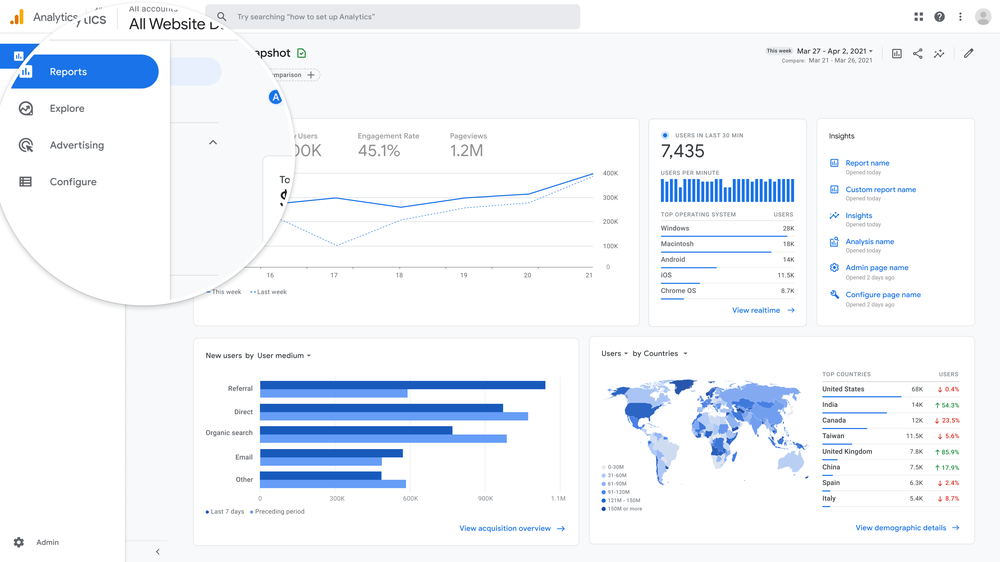
A must for any website, especially an e-commerce website.
In short – Google analytics is like a marketers wet dream.
Personally I spend hours.. I mean not hours, I do actually have a life.. Anyways – I spend an ‘amount’ of time gathering information from our own Google Analytics dashboard to better serve our customers to grow our business. This free tool is made by Google and piggybacks off your businesses website to give you accurate and insightful data to use how you see fit. It might not help you take over the world, but it’ll help you increase conversions.
Well, it doesn’t directly increase conversions.. but Google Analytics creates a space for testing and feedback so you can make those conversion increasing changes to your website. For example,
- Google Analytics can show you a potential target customer base you haven’t noticed before. You could be targeting customers locally and not even realise 90% of your traffic is coming from overseas, how could you take advantage of that?
- Leading on from point 1 – Google Analytics can show you the demographics of users landing on your website. This information is invaluable to any marketing strategy.
- You might not even know that particular website pages are broken or turning your customers away – Google Analytics breaks down your Bounce Rate to identify where problems are so you can fix them.
- You can find out how users are getting to your website – Is there a potential opportunity to capitalise on there?
- Do you want your user base returning frequently to your website? You can track your user retention through Google Analytics.
Google My Business
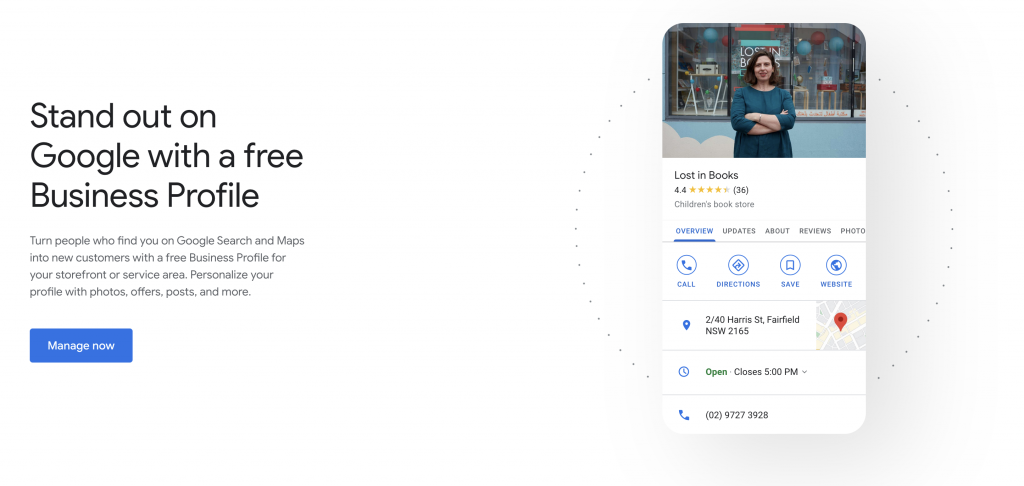
Not literally Google my business – it’s called Google My Business.
The second free tool from Google I’m going to recommend is Google My Business (GMB). An essential for any business, GMB gives you a dedicated information feed for customers to use when they’ve organically searched for you. Imagine GMB as a basic storefront that shows your contact details, your location, your opening hours, and images related to your business.
It can even be used for finding directions to your business locations, for customers to post reviews about their experiences, or so they can colab and upload their photos of your products or store. Google’s constantly expanding on GMB and now offers an updates feed, a direct messaging option, and a space to post frequently asked questions. Offer your services, show off your menu, let customers know how they can shop with you. Google My Business is an essential free online tool.
Google Trends.
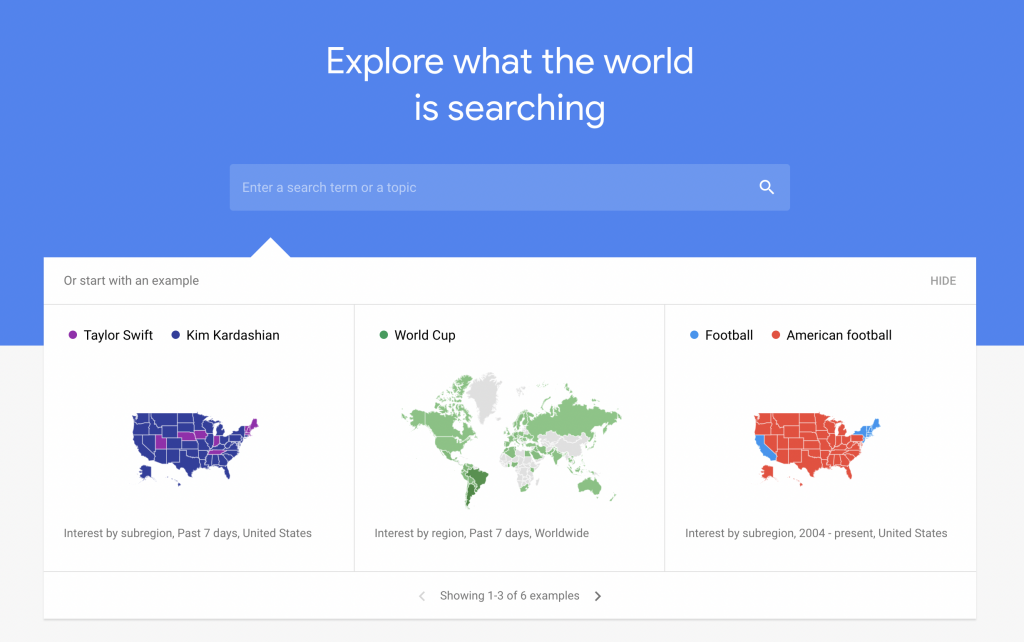
Google really likes giving out free tools!
Bit of out of the loop nowadays? You’re not alone. Trends change as often as you change your underwear.. That’s every day for those who didn’t know. Thankfully, you don’t have to be hooked into every social orifice of the wide web to keep up to date and can opt for another free tool by Google called Google Trends that lets you know what people are Googling. It’s perfect for content creation and for keeping your brand up to date with trending trendy trends.
It’s super simple to use, just search different terms and topics related to your business or marketing campaign ideas. This will give you common search phrases, related topics, and queries which can be compared against other keywords. Google Trends also lets you search geographically by area or worldview so you can see what’s trending in different locations. They even have data on previous years search trends. Pair this with a Social Media and content creation strategy and you’re good to go!
Google Drive.

Google’s all-in-one tool to help you get online.
When I first started using Google Drive as a student I was pretty reluctant to do so. After using Microsoft applications for years I was unwilling to step away from the norm but quickly I realised how behind on the times I was. Google Drive is one of the best online tools you can get nowadays and a majority of it is completely free. You can craft sharable essays, documents, presentations, spreadsheets, questionnaires or forms, and PDF’s. Not only that, you can store files and images, use Google’s Calendar, its Gmail email service, host video calls or chatrooms, manage Google advertisements, or take advantage of Google Workspace for teams.
It can be pretty overwhelming when you look at all these online tools Google offers but Google’s built all these tools to be as user friendly as possible. Not only that, they follow the same conventions as all the other tools out there, making switching easier than ever. To this day I continue to use their services daily. By integrating it into Builtflat we operate smoother, get work done faster, and in the beginning it saved us a lot of money we didn’t have to spend on expensive programs or annual subscriptions. If you’re not already a Google user or haven’t taken a full drive in, this is one online tool to check out and take advantage of.
Email Marketing
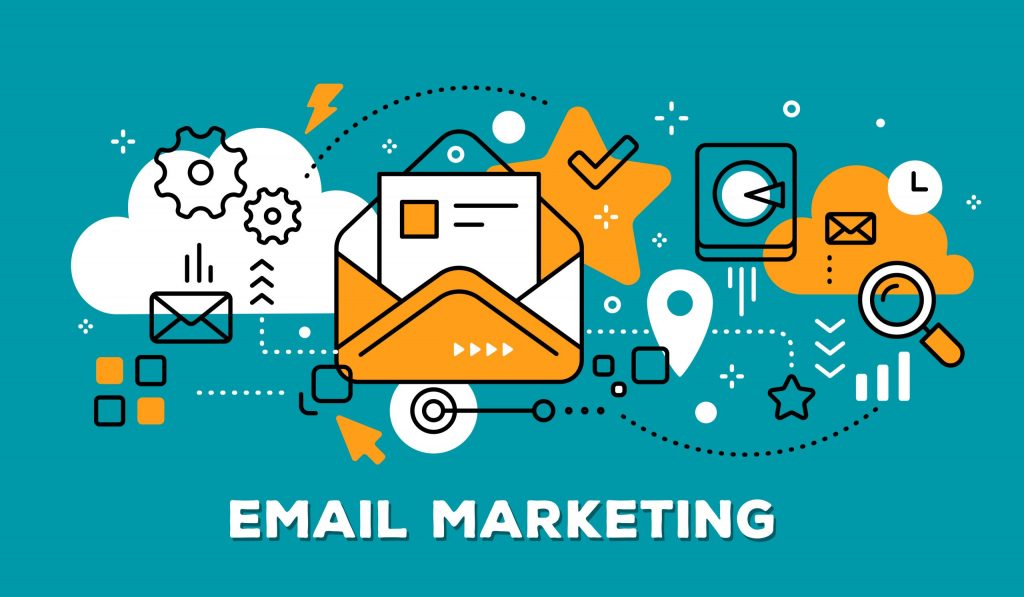
One of the earliest forms of digital marketing.
Since its conception in 1971 by a computer engineer named Ray Tomlinson, email has grown as a useful tool. So useful that it’s estimated that in 2022 333.2 billion emails [https://www.statista.com/statistics/456500/daily-number-of-e-mails-worldwide/] are sent every day. Marketers everywhere understand the power of email marketing and its ability to grow communities, relationships, and businesses. But if you’d rather see a dollar value of email marketing, check out this study which found every £1 spent on email marketing had an average return of £38 on their investment.
So, where do you get started? Getting your email list, and no I don’t mean buying one. Unless you earn those email addresses, whatever addresses you have are from people who haven’t opted in and 9/10 of them would not be happy receiving your emails. This is a two way street here, you give and you get. Experiment with different techniques for getting people to sign on to your emailing list. For instance, using competitions sign ups, trading them for discounts or free shipping, or even just asking your customers are all ways of getting emails.
While you’re gathering your email list you should do some research on national [https://www.consumerprotection.govt.nz/general-help/consumer-laws/online-safety-laws-and-rules/] and international [https://www.litmus.com/blog/the-ultimate-guide-to-international-email-law-infographic/] email regulations. You don’t want to be stung in the courts or get your email address flagged as spam. This means you need to be careful about the frequency of your emails and the quality of content that goes in them. Just like with Social Media ads, start small and test to get a feel for what your customers respond well to so you can build your roadmap to email marketing success.
Xero

If it doesn’t make dollars, it doesn’t make sense – Well Xero makes sense of the dollars!
Xero makes an often unpleasant task of dealing with the bookkeeping easier for everyone, which is why it’s made our list of digital tools to help your business. This paid cloud-based accounting software covers purchasing, managing invoicing, bookkeeping, expenses, inventory, bank reconciliation, and more from any device with an internet connection. Not only that, it’s recognised by and integrates flawlessly with hundreds of third-party applications such as Stripe, PayPal, and Capsule. This only makes Xero perform better. For instance, if you integrate Xero with Stripe your customers can then pay their bills directly with a debit or credit card.
I’m not going to overload you with Xero’s features so I’ll keep this short and sweet. From a digital developer standpoint, what I love about Xero is how easy it is to use. The UX and UI design throughout their website and application dashboard means even a dummy like me can do my GST return in 3 clicks. I never see Xero as a task to do. To me, it’s a helpful employee who takes the stress out of often-times complicated jobs, keeps me updated and informed about our books, and helps our business run smoothly.
Cloud storage

Is your head in the cloud? No? It should be!
The evolution of data based storage has transformed in leaps in bounds. From fridge-size devices to usb drives with x100 better storage and performance. Then came the Cloud which revolutionised how we accessed our stored data. Cloud based storage means your data gets stored away on servers located around the world which you can access anytime and anywhere you have an internet connection. There’s now no need for you to lug around your fridge-sized harddrives anymore! This is why Cloud storage is one of the most important digital tools to get your business online and to improve your day to day operation.
Ever lose a usb drive? Or arrive at a meeting and realise you’ve forgotten to get your presentation? How about going into the office to get some data files so you can work from home? These are some annoying situations that Cloud storage fixes, but there’s something even greater it can do, protect your data. Nowadays you always hear about businesses suffering from ransomware, an attack on your computer systems that locks you out of your files unless you pay a ransom. Well, if your files are backed up to the Cloud then you’ve still got access to them. I think that’s Hackers – 0 and Cloud storage – 1.
There’s now a lot of different options out there to get access to this great digital tool with free and paid packages ranging from 2GB to, well.. the skys the limit really. Dropbox has gained popularity in the Cloud space and offers great team packages for you to take advantage of. Even Google and Microsoft have their own in the form of Google Drive and OneDrive, each with their own features. Have a look at these three and the many others out there and get your head in the Cloud!
Website development.

What’s the point of getting online if your customers can’t find you online?
Conflict of interest here – At Builtflat we build and develop websites. But I’m not here to tell you why you should pick us to do so, I’m here to tell you why websites are the best online tool you need as a business. We’re in this line of work to help people out, not push sales.
Expectation
A while ago, if you wanted to find a business you would check the Yellow or White pages. Now, you do an internet search. There now is an expectation amongst a majority of the population that your brand will have a website they can find for information or purchasing. If they can’t, you’re really going to suffer with points 2 and 3.
Credibility
Why can’t I find your website? Are you hiding something? Do you even exist? How do I see the quality of your business? A good website answers all those questions that potential customers might ask themselves if you don’t have one. Here’s a fun fact, 74% of users admit to judging a businesses credibility just off the website design alone. How would they judge a business who doesn’t have one at all? A website is an opportunity for your business to show your customers that you’re the best, that you’re around, and that you’re ready and waiting for them whenever they want.
Sales
Think of a website as a silent salesperson who’s working 24/7 and costs less wages than any employee you could ever find. They’re just sitting there and waiting for a potential customer to land on them so they can use their integrated sales techniques to help convert them to a sale or generate a lead. With minimal effort, that’s an opportunity for you or money straight in the bank.
Market expansion and growth
If you run brick and mortar retail stores, market expansion might be opening another store in a different town or suburb. It’s definitely more reach than what you had previously but how does it stack up against having a website that can be accessed by anyone nationally or around the globe? A website offers unparalleled market expansion and growth for any brand and business. So if more opportunity and money is what you’re after, then you’re after a website.
Consumer insights
What good would all that expansion and growth be if you couldn’t grow it further! Like we covered with Google Analytics, having a website means you can access those juicy consumer insights which gives you a literal roadmap to success. Identifying potential markets, tracking promotions, finding customer issues, track retention, test changes and their outcomes, and more, and more, and more.. You get the idea.
Advertising
Having a well-built website means you have a platform to advertise that’s purpose is to convert potential customers into sales or leads, and increase brand awareness. Without one it becomes very hard to take advantage of Google’s own Google AdWords or the many other online advertising outlets available. Trust me, you want to take advantage of one of the most targetable, accurate, and cost effective marketing solutions available.
Customer service
One great ability websites offer businesses is their customer service. Not only can you reduce your customer services costs and save time, you’ve got that 24/7 sales person sitting there. They’re answering all those pricing enquiries, frequently asked questions, providing credibility and reviews, giving brand insights, showing your products and services, your office hours, your locations, and more.
Competition
It’s pretty likely that your competition has their own website, trying to take as much from the market as they can. Ramp up the competition a bit. Make it harder for them to get those easy online sales or run them out with a perfectly built website, digital marketing strategy, and some willpower.
What else..
Well, there’s heaps of reasons. Websites can make you industry leaders, an authoritative source of information, it can help build relationships with your customers, give out brand updates or promotions, help you compete with larger brands, teach consumers about your brand and offerings, show your professionalism, and your brand identity. The possibilities are kind of endless..
I really hope you’re taking advantage of these digital tools to help get your business online. If you’re not, I hope this article has given you a slight push to give them a go. Look at the offerings Google has and how it can help your marketing and online presence. At how Social Media can build a closer connection with your customers. Think about how email marketing or Stripe could grow your business, or how Xero could streamline your operations. Check out the offerings for Cloud storage because your data is an important piece of your business. Keep in mind the benefits you can reap from having a website for your brand.
Thank you for taking the time to read this article, we hope it’s helped and giving some clarity to the vast amount of digital tools available. Besides this list, there’s hundreds more tools out there just waiting for you to take advantage of. If you ever need some help or guidance in this sometimes daunting digital space, contact Builtflat anytime. We’d love to help out any way we can!
